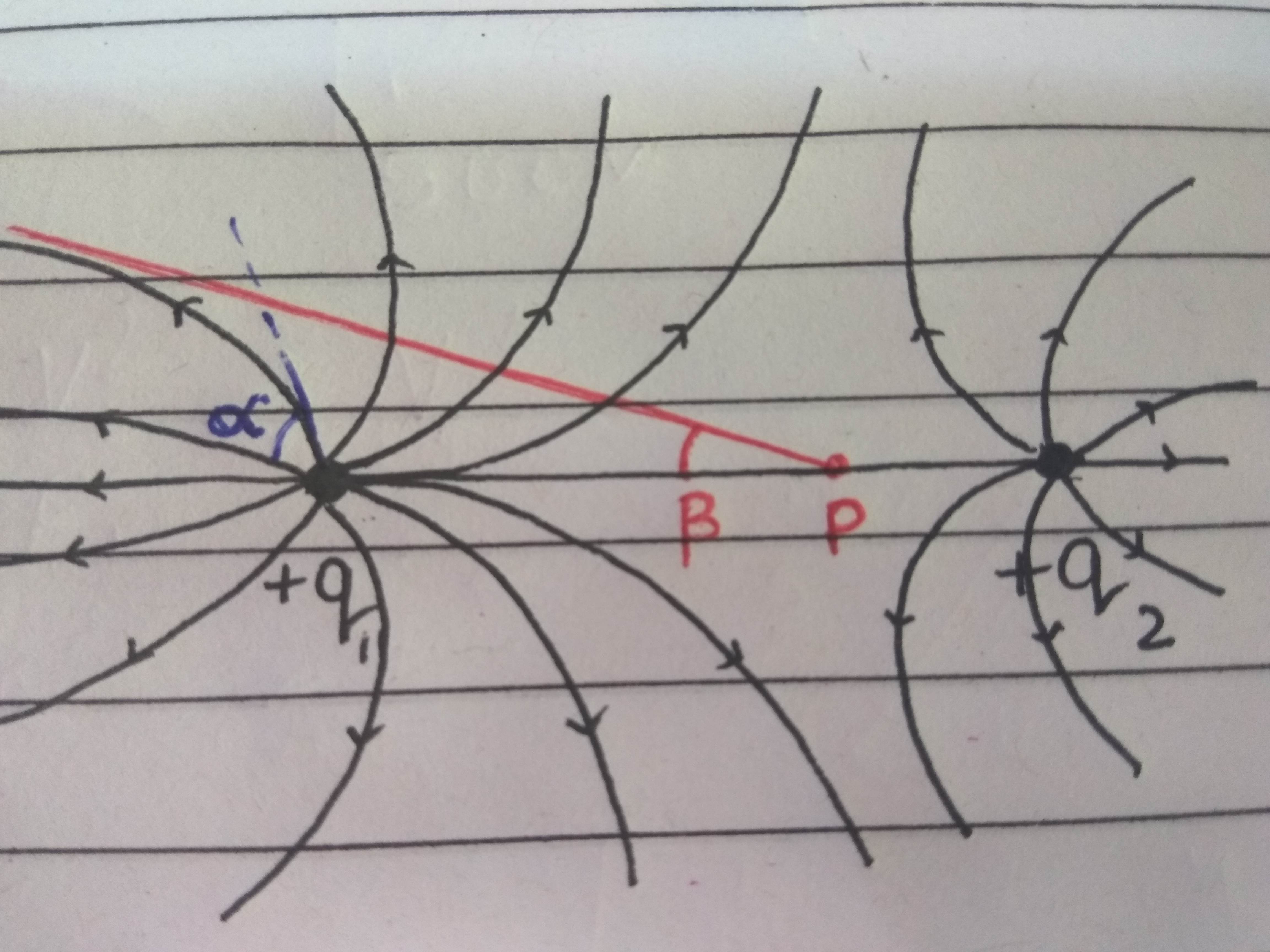For two positive point charges in space separated by some finite distance, the electric field lines we observe look like this:
(for point $P$ being the neutral point, the line shown in red is asymptotic to the field line emerging from a charged point $q_{_1}$ at an angle $\alpha$)
Suppose we have 2 positive charges $q_{_1}$ and $q_{_2}$. If an electric field line emerges from $q_{_1}$ at an angle $\alpha$ from the line joining charges $q_{_1}$ and $q_{_2}$, is there a way we can derive the slope of asymptote to the given field line?
In simple words, can we derive a relationship between $\alpha$ and $\beta$?
Edit
I've been thinking that if somehow we can count the number of field lines emitted in the conical region, having semi vertical angle equal to $\beta$ and with its vertex at $P$, that do not go out of the curved surface area of the cone (hence I mean, measuring the flux through the base of the cone); we can then equate this with the number of field lines emitted from charge $q_{\small{1}}$ within the solid angle $ \Omega= 2\pi\left(1- \cos(\alpha)\right)$. Which is, in magnitude, equal to $\varphi=\frac{q_{\small{1}}}{2\varepsilon_0}\left(1-cos\alpha\right)$.
Hence my question shrinks to:
- How to calculate the number of field lines emitted inside the solid angle $2\pi\left(1-\cos\beta\right)$ subtended at point $P$?

